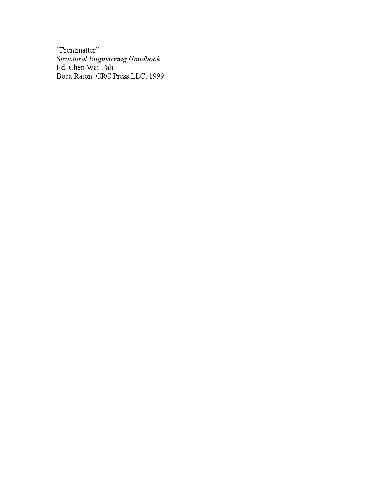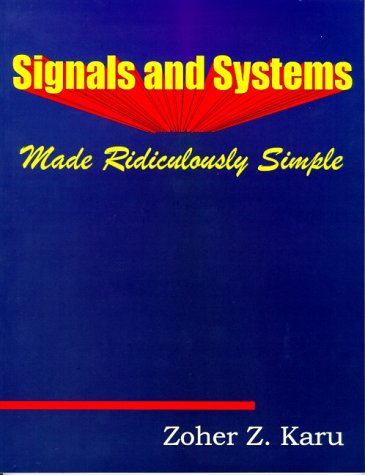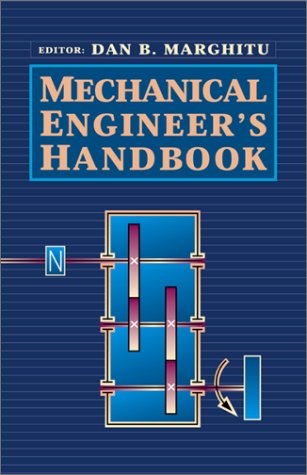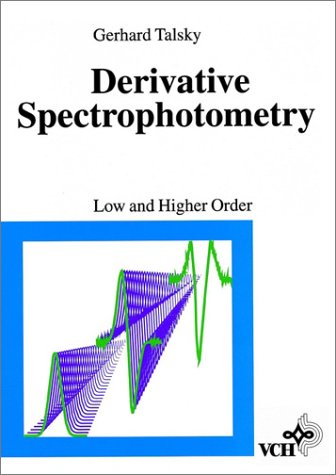Table of contents :
Contents……Page 2
Basic Assumptions……Page 5
Further Reading……Page 0
Governing Equations……Page 6
Boundary Conditions……Page 10
Circular Plate……Page 12
Examples of Bending Problems……Page 13
Basic Concepts……Page 16
Columns……Page 18
Thin-Walled Members……Page 26
Plates……Page 30
Defining Terms……Page 31
Fundamental Principles……Page 35
Loads and Reactions……Page 36
Idealized Models……Page 38
Relation Between Load, Shear, and Bending Moment……Page 39
Shear and Bending Moment Diagrams……Page 40
Fix-Ended Beams……Page 41
Continuous Beams……Page 45
Beam Deflection……Page 49
Curved Flexural Members……Page 50
Trusses……Page 57
Method of Joints……Page 58
Method of Sections……Page 60
Compound Trusses……Page 61
Slope Deflection Method……Page 62
Application of Slope Deflection Method to Frames……Page 63
Moment Distribution Method……Page 66
Method of Consistent Deformations……Page 69
Bending of Thin Plates……Page 76
Boundary Conditions……Page 77
Bending of Simply Supported Rectangular Plates……Page 78
Bending of Circular Plates……Page 84
Plates of Various Shapes and Boundary Conditions……Page 89
Buckling of Thin Plates……Page 92
Stress Resultants in Shell Element……Page 95
Spherical Dome……Page 98
Conical Shells……Page 100
Shells of Revolution Subjected to Unsymmetrical Loading……Page 101
Membrane Theory of Cylindrical Shells……Page 102
Symmetrically Loaded Circular Cylindrical Shells……Page 103
Buckling of Shells……Page 105
Influence Lines for Shear in Simple Beams……Page 106
Influence Lines for Bending Moment in Simple Beams……Page 107
Qualitative Influence Lines……Page 108
Energy Methods in Structural Analysis……Page 110
Strain Energy in Bending……Page 111
Strain Energy in Shear……Page 113
The Energy Relations in Structural Analysis……Page 114
Unit Load Method……Page 118
Flexibility Method……Page 120
Stiffness Method……Page 121
Element Stiffness Matrix……Page 122
Structure Stiffness Matrix……Page 127
Loading Between Nodes……Page 132
Semi-Rigid End Connection……Page 133
Basic Concept……Page 134
Basic Equations from Theory of Elasticity……Page 135
Plane Strain……Page 136
Choice of Displacement Function……Page 137
Isoparametric Families of Elements……Page 140
Formulation of Stiffness Matrix……Page 141
Plates Subjected to In-Plane Forces……Page 147
Beam Element……Page 148
Plates in Bendings—Rectangular Element……Page 150
An Overall View……Page 155
Redistribution of Forces……Page 156
Plastic Moment……Page 158
Theory of Plastic Analysis……Page 161
Equilibrium Method……Page 162
Mechanism Method……Page 166
Gable Frames……Page 171
Analysis Charts for Gable Frames……Page 173
Grillages……Page 176
First-Order Hinge-By-Hinge Analysis……Page 178
Categorization of Analysis Methods……Page 180
Columns Stability……Page 183
Beam-Column Stability……Page 188
Slope Deflection Equations……Page 192
Second-Order Elastic Analysis……Page 196
Modification for End Connections……Page 199
Second-Order Refined Plastic Hinge Analysis……Page 200
Second-Order Plastic Zone Analysis……Page 201
Three-Dimensional Frame Element……Page 202
Equation of Motion……Page 204
Free Vibration……Page 205
Forced Vibration……Page 207
Response to Suddenly Applied Load……Page 208
Multiple Degree Systems……Page 209
Distributed Mass Systems……Page 210
Numerical Analysis……Page 214
Defining Terms……Page 218
Structural Steel Design……Page 224
Stress-Strain Behavior of Structural Steel……Page 225
A852)……Page 226
Fireproofing of Steel……Page 227
Structural Steel Shapes……Page 228
Welds……Page 229
Weldability of Steel……Page 230
Design Formats……Page 231
Allowable Stress Design……Page 233
Load and Resistance Factor Design……Page 235
Load and Resistance Factor Design……Page 239
Allowable Stress Design……Page 241
Load and Resistance Factor Design……Page 243
Built-Up Compression Members……Page 245
Flexural Members……Page 250
Flexural Strength Criterion……Page 253
Shear Strength Criterion……Page 254
De ection Criterion……Page 255
Flexural Strength Criterion……Page 258
Shear Strength Criterion……Page 261
Criteria for Concentrated Loads……Page 262
Continuous Beams……Page 264
Lateral Bracing of Beams……Page 267
Allowable Stress Design……Page 269
Load and Resistance Factor Design……Page 270
Allowable Stress Design……Page 272
Combined Bending, Torsion, and Axial Force……Page 273
Frames……Page 274
Allowable Bending Stress……Page 275
Transverse Stiffeners……Page 276
Flexural Strength Criterion……Page 277
Shear Strength Criterion……Page 278
Bearing Stiffeners……Page 279
Intermediate Stiffeners……Page 280
Connections……Page 283
Bolt Holes……Page 284
Bolts Loaded in Tension……Page 285
Bolts Loaded in Combined Tension and Shear……Page 286
Bearing Strength at Fastener Holes……Page 287
Maximum Fastener Spacing……Page 289
Bolted Hanger Type Connections……Page 290
Bolted Bracket Type Connections……Page 292
Bolted Moment-Resisting Connections……Page 294
Design of Moment-Resisting Connections……Page 297
Welding Symbols……Page 298
Strength of Welds……Page 300
Effective Area of Welds……Page 301
Welded Connections for Tension Members……Page 302
Welded Bracket Type Connections……Page 303
Welded Connections with Welds Subjected to Combined Shear and Flexure……Page 304
Shop Welded-Field Bolted Connections……Page 306
Beam and Column Splices……Page 308
Column Base Plates……Page 310
Axially Loaded Base Plates……Page 311
Base Plates with Moments……Page 313
Anchor Bolts……Page 315
Beam Bearing Plates……Page 318
Design Compressive Strength……Page 319
Composite Beams……Page 321
Composite Floor Slabs……Page 322
Plastic Design of Columns and Beams……Page 325
Defining Terms……Page 326
References……Page 327
Further Reading……Page 328
Structural Concrete Design……Page 331
Properties of Concrete……Page 332
High-Strength Concrete……Page 334
Reinforcing Steel……Page 335
Proportioning Concrete Mix……Page 336
Admixtures……Page 337
Flexural Design of and One-Way Slabs……Page 338
Analysis of Rectangular Beams with Tension Reinforcement Only……Page 339
Analysis of Beams with Tension and Compression Reinforcement……Page 341
Elastic Flexural Analysis……Page 342
Flexural Strength……Page 343
Short Columns under Minimum Eccentricity……Page 344
Slenderness Effects……Page 345
Bresler Load Contour Method……Page 348
Reinforced Concrete Beams and One-Way Slabs Strength Design……Page 349
Design of Beams and One-Way Slabs Without Shear Reinforcement: for Shear……Page 350
Design of Beams and One-Way Slabs without Shear Reinforcement:……Page 351
Design of Stirrup Reinforcement for Shear and Torsion……Page 352
Design of Deep Beams……Page 353
Shear Strength Provided by the Concrete……Page 354
Development of Bars in Tension……Page 355
Splices……Page 356
Web Reinforcement……Page 357
Design Procedures……Page 359
Minimum Slab Thickness and Reinforcement……Page 361
Direct Design Method……Page 362
Equivalent Frame Method……Page 364
Detailing……Page 367
Slope De ection……Page 368
ACI Moment Coefficients……Page 369
Limit Analysis……Page 370
Flexural Members……Page 371
Columns……Page 372
Joints of Frames……Page 373
Brackets and Corbels……Page 375
Footings……Page 376
Types of Footings……Page 377
Size of Footings……Page 378
One-Way Shear……Page 379
Flexural Reinforcement and Footing Reinforcement……Page 380
Dowels on Footings……Page 382
Wall Footings……Page 383
Single-Column Spread Footings……Page 384
Combined Footings……Page 385
Two-Column Footings……Page 386
Strip, Grid, and Mat Foundations……Page 388
Footings on Piles……Page 390
Panel, Curtain, and Bearing Walls……Page 392
Shears Walls……Page 393
Defining Terms……Page 396
References……Page 401
Further Reading……Page 402
Introduction……Page 404
Causes of Earthquakes and Faulting……Page 406
Global……Page 409
U.S…….Page 410
Other Areas……Page 412
Magnitude……Page 415
Time History……Page 417
Elastic……Page 421
Inelastic Response Spectra……Page 426
Response Spectrum Intensity and Other Measures……Page 427
Engineering Intensity Scale……Page 428
Strong Motion Attenuation and Duration……Page 429
Code Approach……Page 439
Probabilistic Seismic Hazard Analysis……Page 440
Analytical Methods……Page 446
Empirical Methods……Page 447
Liquefaction and Liquefaction-Related Permanent Ground Displacement……Page 448
Simplified Procedure for Evaluation of Liquefaction Potential……Page 453
Purpose of Codes……Page 459
Historical Development of Seismic Codes……Page 460
Selected Seismic Codes……Page 461
Buildings……Page 463
How Earthquake Forces are Resisted……Page 466
Estimation of Earthquake Forces……Page 468
Types of Buildings and Typical Earthquake Performance……Page 469
Bridges……Page 474
Industrial Structures……Page 475
Defining Terms……Page 477
References……Page 479
Further Reading……Page 486
Historical Overview……Page 489
Scope……Page 491
Design Codes……Page 492
Concrete……Page 494
Shear Connectors……Page 496
Simply-Supported Composite Beams……Page 497
Beam Response and Failure Modes……Page 499
The Effective Width of Concrete Flange……Page 501
Elastic Analysis……Page 502
Plastic Analysis……Page 504
Vertical Shear……Page 506
Serviceability Limit States……Page 507
Worked Examplesfootnotemark……Page 508
Effective Width……Page 515
Local Buckling and Classification of Cross-Sections……Page 516
Elastic Analysis of the Cross-Section……Page 518
Plastic Resistance of the Cross-Section……Page 519
Serviceability Limit States……Page 521
Ultimate Limit State……Page 525
The Lateral-Torsional Buckling……Page 528
Worked Examples……Page 529
The Shear Connection……Page 534
The Shear Transfer Mechanisms……Page 535
The Shear Strength of Mechanical Shear Connectors……Page 539
Steel-Concrete Interface Separation……Page 546
Shear Connectors Spacing……Page 547
Transverse Reinforcement……Page 548
The Shear Connection in Fully and Partially Composite Beams……Page 549
Worked Examples……Page 555
Types of Sections and Advantages……Page 560
The Elastic Behavior of the Section……Page 562
The Plastic Behavior of the Section……Page 563
The Behavior of the Members……Page 567
Influence of Local Buckling……Page 571
Shear Effects……Page 572
Restrictions for the Application of the Design Methods……Page 573
Worked Examples……Page 574
Composite Slabs……Page 583
The Steel Deck……Page 584
The Composite Slab……Page 585
Worked Examples……Page 597
Introduction……Page 611
Design Standards……Page 613
Allowable Stress Design (ASD)……Page 614
Limit States Design or Load and Resistance Factor Design (LRFD)……Page 615
Materials and Mechanical Properties……Page 617
Strength Increase from Cold Work of Forming……Page 619
Ductility……Page 620
Maximum Flat-Width-to-Thickness Ratios……Page 621
Stiffened Elements under Uniform Compression……Page 622
Stiffened Elements with Stress Gradient……Page 626
Uniformly Compressed Elements with an Edge Stiffener……Page 627
Uniformly Compressed Elements with Intermediatenewline Stiffeners……Page 629
Tension Members……Page 630
Flexural Members……Page 631
Concentrically Loaded Compression Members……Page 647
Cylindrical Tubular Members……Page 652
Welded Connections……Page 654
Bolted Connections……Page 656
Screw Connections……Page 657
Metal Buildings……Page 659
Shear Diaphragms……Page 660
Shell Roof Structures……Page 661
Wall Stud Assemblies……Page 663
Composite Construction……Page 664
Defining Terms……Page 665
The Material……Page 671
Alloy Characteristics……Page 672
Codes and Specifications……Page 673
General……Page 674
Component Behavior……Page 676
Joints……Page 688
Fatigue……Page 689
General Considerations……Page 690
Design Studies……Page 692
Defining Terms……Page 700
Introduction……Page 703
Types of Structures……Page 704
Properties of Wood……Page 705
Loads and Load Combinations……Page 707
Adjustment of Design Values……Page 708
Beam Design……Page 710
Moment Capacity……Page 711
Shear Capacity……Page 713
Bearing Capacity……Page 715
Tension Member Design……Page 716
Solid Columns……Page 717
Spaced Columns……Page 720
Combined Bending and Axial Tension……Page 721
Biaxial Bending or Combined Bending and Axial Compression……Page 722
NDS Provisions……Page 723
Fastener and Connection Design……Page 724
Nails, Spikes, and Screws……Page 725
Bolts, Lag Screws, and Dowels……Page 729
Other Types of Connections……Page 732
Structural Panels……Page 733
Design Resources……Page 734
Shear Walls and Diaphragms……Page 735
Trusses……Page 736
Curved Beams……Page 737
Arches……Page 738
Deflections……Page 740
Non-Structural Performance……Page 741
Defining Terms……Page 742
Introduction……Page 746
Classification……Page 748
Design……Page 750
Loads……Page 752
Welding……Page 753
Bolting……Page 756
Fabrication in Shop……Page 757
Painting……Page 758
Reinforced Concrete Bridges……Page 759
Prestressed Concrete Bridges……Page 761
Bents and Piers……Page 771
Introduction……Page 772
Decks……Page 774
Bearings, Expansion Joints, and Railings……Page 776
Bearings (Shoes)……Page 777
Expansion Joints……Page 779
Railings……Page 780
Structural Features……Page 781
Plate Girder (Noncomposite)……Page 782
Composite Girder……Page 785
Grillage Girder……Page 787
Structural Features……Page 789
Structural Analysis and Secondary Stress……Page 790
Gerber Truss Bridge……Page 791
-Rahmen (Strutted Beam Bridge)……Page 792
Structural Features……Page 793
Langer Bridge……Page 794
Lohse Bridge……Page 795
Structural Features……Page 796
Structural Analysis……Page 797
Tension in Cable……Page 798
Structural Features……Page 800
Structural Analysis……Page 801
Cable Design……Page 803
Stability for Wind……Page 804
Defining Terms……Page 805
Overview……Page 854
Limitations……Page 855
Other Materials……Page 856
Geometries……Page 858
Failure Modes……Page 859
Loads and Load Combinations……Page 860
Nomenclature……Page 861
Uniform Axial Compression……Page 863
Axial Compression Due to Bending Moment……Page 864
Shear……Page 865
External Pressure……Page 866
Allowable Longitudinal and Bending Stresses……Page 867
Cone-Cylinder Junction Rings……Page 868
Intermediate Stiffening Rings……Page 869
For Combination of Axial Compression Due to Bending Moment, and Hoop Compression……Page 870
For Combination of Uniform Axial Compression, Axial Compression Due to Bending Moment, and Shear, in the Presence of Hoop Compression,……Page 871
Shells Subjected to External Pressure……Page 872
With Unequal Biaxial Stresses—One Stress Is Compressive and the Other Is Tensile……Page 874
Tolerances for Formed Heads……Page 875
Further Reading……Page 876
Rigid Frames……Page 879
Simple Frames (Pin-Connected Frames……Page 880
Braced Frames vs. Unbraced Frames……Page 881
Sway Frames vs. Non-Sway Frames……Page 883
Classification of Tall Building Frames……Page 884
Floor Structures in Multistory Buildings……Page 885
Composite Floor Systems……Page 887
Composite Beams and Girders……Page 888
Long-Span Flooring Systems……Page 890
Comparison of Floor Spanning Systems……Page 896
Floor Diaphragms……Page 897
Introduction……Page 902
Gravity Frames……Page 903
Bracing Systems……Page 907
Moment-Resisting Frames……Page 913
Tall Building Framing Systems……Page 918
Steel-Concrete Composite Systems……Page 925
Introduction……Page 928
Characteristics of Wind……Page 931
Wind Induced Dynamic Forces……Page 935
Response Due to Along Wind……Page 938
Response Due to Across Wind……Page 944
Torsional Response……Page 949
Response by Wind Tunnel Tests……Page 950
Defining Terms……Page 951
General Introduction……Page 956
Definition of the Space Frame……Page 957
Basic Concepts……Page 958
Advantages of Space Frames……Page 959
Preliminary Planning Guidelines……Page 960
Types and Geometry……Page 961
Type Choosing……Page 963
Method of Support……Page 967
Design Parameters……Page 969
Cambering and Slope……Page 971
Methods of Erection……Page 972
Form and Layer……Page 973
Braced Barrel Vaults……Page 974
Braced Domes……Page 976
Hyperbolic Paraboloid Shells……Page 978
Intersection and Combination……Page 980
Design Loads……Page 981
Static Analysis……Page 985
Earthquake Resistance……Page 989
Stability……Page 991
General Description……Page 995
Proprietary System……Page 998
Bearing Joints……Page 1008
Defining Terms……Page 1010
Introduction……Page 1015
Components of a Natural Draft Cooling Tower……Page 1016
Damage and Failures……Page 1018
Geometry……Page 1020
Loading……Page 1022
Methods of Analysis……Page 1027
Design and Detailing of Components……Page 1035
Construction……Page 1042
Application……Page 1050
Constructibility……Page 1052
State of the Art Review……Page 1053
Calculation of Loads Using NESC Code……Page 1054
Security Loads……Page 1055
Transverse Loads……Page 1056
Longitudinal Loading……Page 1058
Tower Geometry……Page 1059
Analysis and Design Methodology……Page 1061
Allowable Stresses……Page 1062
Connections……Page 1063
Tower Testing……Page 1064
Stress Analysis……Page 1067
Tubular Steel Poles……Page 1068
Wood Poles……Page 1069
Guyed Poles……Page 1070
Transmission Tower Foundations……Page 1072
Foundation Types—Selection and Design……Page 1073
Anchorage……Page 1075
Foundation Testing……Page 1076
Design Examples……Page 1077
Defining Terms……Page 1080
Notations……Page 1084
Damage to in Recent Earthquakes……Page 1088
Performance-Based Design Criteria……Page 1090
Background of Criteria Development……Page 1092
Safety Evaluation Earthquake……Page 1093
Earthquake Load……Page 1095
Reinforcement……Page 1096
Dynamic Time History Analysis……Page 1097
Section Properties of……Page 1098
Members……Page 1099
Gusset Plate Connections……Page 1101
Anchor Bolts (Rods) and Anchorage Assemblies……Page 1106
Prying Action……Page 1107
Steel Structures……Page 1108
Determination of SRMDs Properties……Page 1109
Connections……Page 1110
Acceptable Force D/C Ratios and Limiting Values……Page 1111
Beam-Column (Bent Cap) Joints……Page 1116
Acceptance Criteria……Page 1117
Defining Terms……Page 1119
References……Page 1120
Concept……Page 1122
Section Properties……Page 1123
Limiting Effective Slenderness Ratios……Page 1127
Analytical Equation……Page 1128
Graphical Solution……Page 1129
Acceptable Force D/C Ratios and Limiting Values……Page 1130
Definition of Force Demand/Capacity (D/C) Ratios……Page 1131
Force D/C Ratios and Ductility……Page 1132
General Limiting Values……Page 1133
Acceptable Force D/C Ratios……Page 1134
Inelastic Analysis Considerations……Page 1135
Reduced Section Properties……Page 1136
Yield Surface Equation for Doubly Symmetrical Sections……Page 1138
Introduction……Page 1141
Basic Concept……Page 1142
Alignment Chart Method……Page 1143
Requirements for Braced Frames……Page 1146
Simplified Equations to Alignment Charts……Page 1148
Different Restraining Girder End Conditions……Page 1150
Different Restraining Column End Conditions……Page 1151
Column Restrained by Tapered Rectangular Girders……Page 1155
Unsymmetrical Frames……Page 1157
Effects of Axial Forces in Restraining Members in Braced Frames……Page 1158
Consideration of Partial Column Base Fixity……Page 1162
Inelastic K-factor……Page 1163
LeMessurier Method……Page 1164
Lui Method……Page 1166
Rigid Columns……Page 1168
Remarks……Page 1173
Cross Bracing Systems……Page 1174
Laced Columns……Page 1175
Columns with Battens……Page 1177
Columns with Perforated Cover Plates……Page 1180
Built-Up Members with Bolted and Welded Connectors……Page 1182
Tapered Columns……Page 1183
Crane Columns……Page 1184
Columns in Gable Frames……Page 1189
Defining Terms……Page 1190
Introduction……Page 1195
Description of the Stub Girder Floor System……Page 1196
Preliminary Design Procedure……Page 1200
Choice of Stub Girder Component Sizes……Page 1203
Modeling of the Stub Girder……Page 1204
Design Checks for the Bottom Chord……Page 1208
Design Checks for the Shear Transfer Regions……Page 1209
Design of Stubs for Shear and Axial Load……Page 1210
Design of Stud Shear Connectors……Page 1211
Design of Welds between Stub and Bottom Chord……Page 1213
Use of Stub Girder for Lateral Load System……Page 1215
Deflection Checks……Page 1216
Defining Terms……Page 1217
Introduction……Page 1220
Stability of the Compression Flange……Page 1221
Lateral Buckling……Page 1222
Compression Flange of a Box Girder……Page 1223
Web Buckling Due to In-Plane Bending……Page 1224
Web Longitudinal Stiffeners for Bending Design……Page 1225
Ultimate Shear Capacity of the Web……Page 1226
Web Stiffeners for Shear Design……Page 1229
Flexure-Shear Interaction……Page 1230
Steel Plate Shear Walls……Page 1231
In-Plane Compressive Edge Loading……Page 1235
Eccentric Edge Loading……Page 1236
Load-Bearing Stiffeners……Page 1237
Girders with Corrugated Webs……Page 1238
Defining Terms……Page 1241
Introduction……Page 1245
Construction Engineering Can Be Critical……Page 1246
Premises and Objectives of Construction Engineering……Page 1247
Illustrations of Challenges in Constructionbreak Engineering……Page 1248
Examples of Inadequate Construction Engineering Allowances and Effort……Page 1249
Considerations Governing Construction Engineering Practices……Page 1250
Two General Approaches to Fabrication andbreak Erection of Bridge Steelwork……Page 1251
Example of Arch Bridge Construction……Page 1252
Which Construction Procedure Is To Be Preferred?……Page 1253
Example of Suspension Bridge Cable Construction……Page 1257
Example of Cable-Stayed Bridge Construction……Page 1258
Determination of Erection Strength Adequacy……Page 1263
Philosophy of the Erection Rating Factor……Page 1266
Minimum Erection Rating Factors……Page 1268
Construction Practices and Specifications—newline The Future……Page 1269
Concluding Comments……Page 1271
Further Illustrations……Page 1272
Introduction……Page 1307
Absorbing Kinetic Energy……Page 1308
Material Properties for Optimum Design……Page 1313
Section Properties for Optimum Design……Page 1314
An Example of Shock Loading……Page 1318
Defining Terms……Page 1319
Further Reading……Page 1320
Introduction……Page 1322
Weld Types……Page 1323
Partial Joint Penetration (PJP) Groove Welds……Page 1324
Groove Weld Preparations……Page 1326
Interaction of Joint Type and Weld Type……Page 1327
Variables Affecting Welded Connection Strength……Page 1328
Determining Throat Size for Tension or Shear Loads……Page 1329
Determining Throat Size for Bending or Torsional Loads……Page 1330
Treating the Weld as a Line to Find Weld Size……Page 1331
Weld Size for Longitudinal Welds……Page 1333
Heat Input and Weld Size……Page 1338
Single-Pass Minimum Sized Welds……Page 1339
Recognize Steel Properties……Page 1340
Residual Stresses in Welding……Page 1342
Selection of Fillet vs. PJP Groove Welds……Page 1343
Fusible Backing……Page 1344
Weld Tabs……Page 1345
Weld Access Holes……Page 1346
Lamellar Tearing……Page 1347
Flexible Seat Angles……Page 1349
Stiffened Seat Brackets……Page 1350
Web Framing Angles……Page 1351
Top Plate Connections……Page 1352
Directly Connected Beam-to-Column Connections……Page 1353
Understanding Ductile Behavior……Page 1354
Two Residual Stresses Isolated……Page 1355
Residual Stresses Applied……Page 1357
Unique Aspects of Seismically Loaded Structures……Page 1358
Base Metal……Page 1360
Weld Metal Properties……Page 1362
Heat-Affected Zones……Page 1363
Weld Backing……Page 1364
Welds and Bolts Sharing Loads……Page 1365
Weld Access Holes……Page 1366
System Options……Page 1367
Ductile Hinges in Connections……Page 1369
Workmanship Requirements……Page 1375
Fit-Up……Page 1376
Nondestructive Testing……Page 1379
Applications for Nondestructive Testing Methods……Page 1380
Post-Northridge Assessment……Page 1381
Flange Rib Connections……Page 1382
Defining Terms……Page 1383
Introduction……Page 1388
Connection Behavior Classification……Page 1389
PR Composite Connections……Page 1392
Moment-Rotation (M-$theta $) Curves……Page 1396
Design of Composite Connections in Braced Frames……Page 1400
Design for Unbraced Frames……Page 1407
Introduction……Page 1418
Design and Evaluation of Structures for Fatigue……Page 1424
Classification of Structural Details for Fatigue……Page 1426
Distortion and Multiaxial Loading Effects in Fatigue……Page 1431
Low-Cycle Fatigue Due to Seismic Loading……Page 1434
Evaluation of Structural Details for Fracture……Page 1435
Specification of Steel and Filler Metal……Page 1436
Fracture Mechanics Analysis……Page 1438
Summary……Page 1443
Defining Terms……Page 1444
Introduction……Page 1450
Surcharge at Grade……Page 1451
Seismic Loads……Page 1453
Pipe and Contents……Page 1454
Flexible Design……Page 1455
Rigid Design……Page 1463
General……Page 1465
Joint Types……Page 1466
Corrosion Protection……Page 1468
Cathodic Protection……Page 1469
Definition of Reliability……Page 1473
Introduction to Reliability-Based Design Concepts……Page 1474
Random Variables and Distributions……Page 1475
Moments……Page 1478
Concept of Independence……Page 1481
EXAMPLE 26.2:……Page 1482
EXAMPLE 26.3:……Page 1483
EXAMPLE 26.4:……Page 1484
Approximate Analysis of Moments……Page 1485
Statistical Estimation and Distribution Fitting……Page 1486
Basic Problem……Page 1488
More Complicated Limit State Functions Reducible to Form……Page 1489
EXAMPLE 26.5:……Page 1490
EXAMPLE 26.6:……Page 1491
EXAMPLE 26.7:……Page 1492
EXAMPLE 26.8:……Page 1493
Techniques……Page 1494
Monte Carlo Simulation……Page 1497
Introduction……Page 1499
Introduction to Classical System Reliability Theory……Page 1500
Redundant Systems……Page 1501
Examples……Page 1502
Material Properties and Design Values……Page 1504
Design Loads and Load Combinations……Page 1506
Defining Terms……Page 1508
References……Page 1509
Appendix……Page 1511
Introduction……Page 1514
Single-Degree-of-Freedom Structural Systems……Page 1516
Multi-Degree-of-Freedom Structural Systems……Page 1519
Energy Formulations……Page 1522
Energy-Based Design……Page 1524
Passive Energy Dissipation……Page 1526
Active Control……Page 1533
Code Development……Page 1535
Concluding Remarks……Page 1537
Introduction……Page 1542
Practical Advanced Analysis……Page 1546
Second-Order Refined Plastic Hinge Analysis……Page 1547
Analysis of Semi-Rigid Frames……Page 1550
Geometric Imperfection Methods……Page 1554
Verifications……Page 1559
Portal Frame……Page 1560
Six-Story Frame……Page 1562
Semi-Rigid Frame……Page 1566
Design Format……Page 1568
Load Combinations……Page 1569
Section Application……Page 1572
Load Application……Page 1573
Ductility Requirements……Page 1574
Computer Program……Page 1576
Hardware Requirements……Page 1578
Execution of Program……Page 1580
Users’ Manual……Page 1581
Roof Truss……Page 1584
Unbraced Eight-Story Frame……Page 1587
Two-Story Four-Bay Semi-Rigid Frame……Page 1590
Defining Terms……Page 1593
Architecture……Page 1600
Failure Modes……Page 1601
General Collapse……Page 1602
Unzipping or Progressive Failure……Page 1604
Materials Problems……Page 1605
Reserve Strength……Page 1606
Joint Efficiency……Page 1608
Application……Page 1611
Summary and Conclusions……Page 1613
Earthquakes……Page 1616
Structural Damage……Page 1618
Liquefaction……Page 1619
Landslides……Page 1624
Weak Clay……Page 1631
Foundation Failure……Page 1636
Foundation Connections……Page 1638
Soft Story……Page 1639
Torsional Moments……Page 1640
Shear……Page 1645
Flexural Failure……Page 1648
Structural Engineering Handbook
Free Download
Be the first to review “Structural Engineering Handbook” Cancel reply
You must be logged in to post a review.







Reviews
There are no reviews yet.